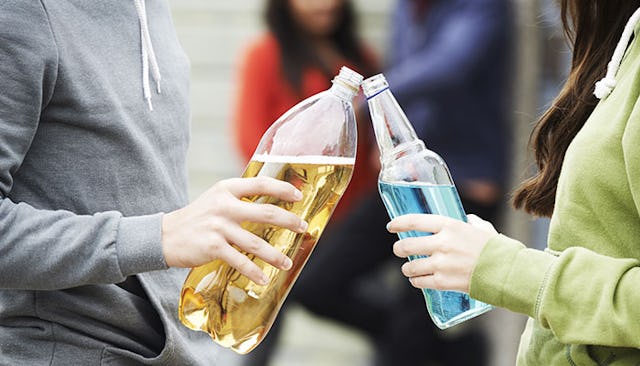Teenagers' Brain Circuitry Makes Them Do Boneheaded Things, And We Don't Protect Them

In short, the boy mice in groups were more inclined to imbibe what would be the equivalent, for humans, of way too many Sex on the Beaches. The implications of this—that adolescents in groups are more likely to seek out risky forms of pleasure—are replicated in human studies: Laurence Steinberg, the lead researcher on the drunk-mice study, conducted another study that had teens play a video driving game. Teens in the presence of other teens took more risks than when they were alone.
Real world statistics support these findings, too. Teens with other kids in the car are four times more likely to have an accident than if they’re alone; for adults, the presence of passengers has no effect on the likelihood of an accident. Teens as a group, while on the whole healthier than younger children, have a much higher death rate—nearly twice as high as kids ages 1 to 4 and more than three times as high as kids 5 to 14—due to accidents.
So what is a parent to do? Kolbert admits to what she calls “hectoring” with her own kids: repeating every awful news story about the death of a teen in an accident. She notes that whether or not this parental nagging works is up for debate; her boys essentially roll their eyes at her concern.
What is clear is that our culture is not especially designed to protect the health of young people. Kolbert notes that kids get their licenses way too early from a safety perspective. Sixteen-year-olds have a fatal-crash rate nearly twice as high as that for 18- and 19-year-olds and three times as high as that for drivers 20 and older. Our public transportation infrastructure is lousy, especially in rural areas, so there’s no alternative to a car. If both parents are working, kids need to drive themselves from school to activities and back.
And a precarious economy forces parents to work long and unpredictable hours, leaving kids unsupervised. Jobs for teens are not as readily available as they were for previous generations. Simply restricting the amount of time teens are at loose ends might be part of the answer. Kolbert notes that public-service campaigns to encourage teens to not drink, smoke or do drugs have had no effect. Steinberg believes that the same amount of money put into activities that keep teens productively occupied might work better.
I think our work culture is also partly to blame. I’ve often heard parents of teens lament that they took time off when their kids were small and now are back at work full time just when they felt like their teens would especially benefit from their presence. Research has shown that teens who spend more time with their parents have fewer behavioral problems and less delinquent behavior. I suspect that we could reduce the accident risks for teens if they simply spent more time with their families, in part-time jobs or pursuing supervised activities that they enjoy.
Steinberg has floated the idea of “maternity” (or paternity) leave for parents of older kids—meaning, perhaps, a certain number of afternoons off per year for family time—arguing that adolescents still need the influence of their parents on a day-to-day basis. Because, it turns out, your kid’s friends may be the ones egging them on to do risky stuff. If mom’s in the car too, she might help them see the benefit of being the most cautious driver on the road. And she’s certainly not going to be serving any Jello shots.